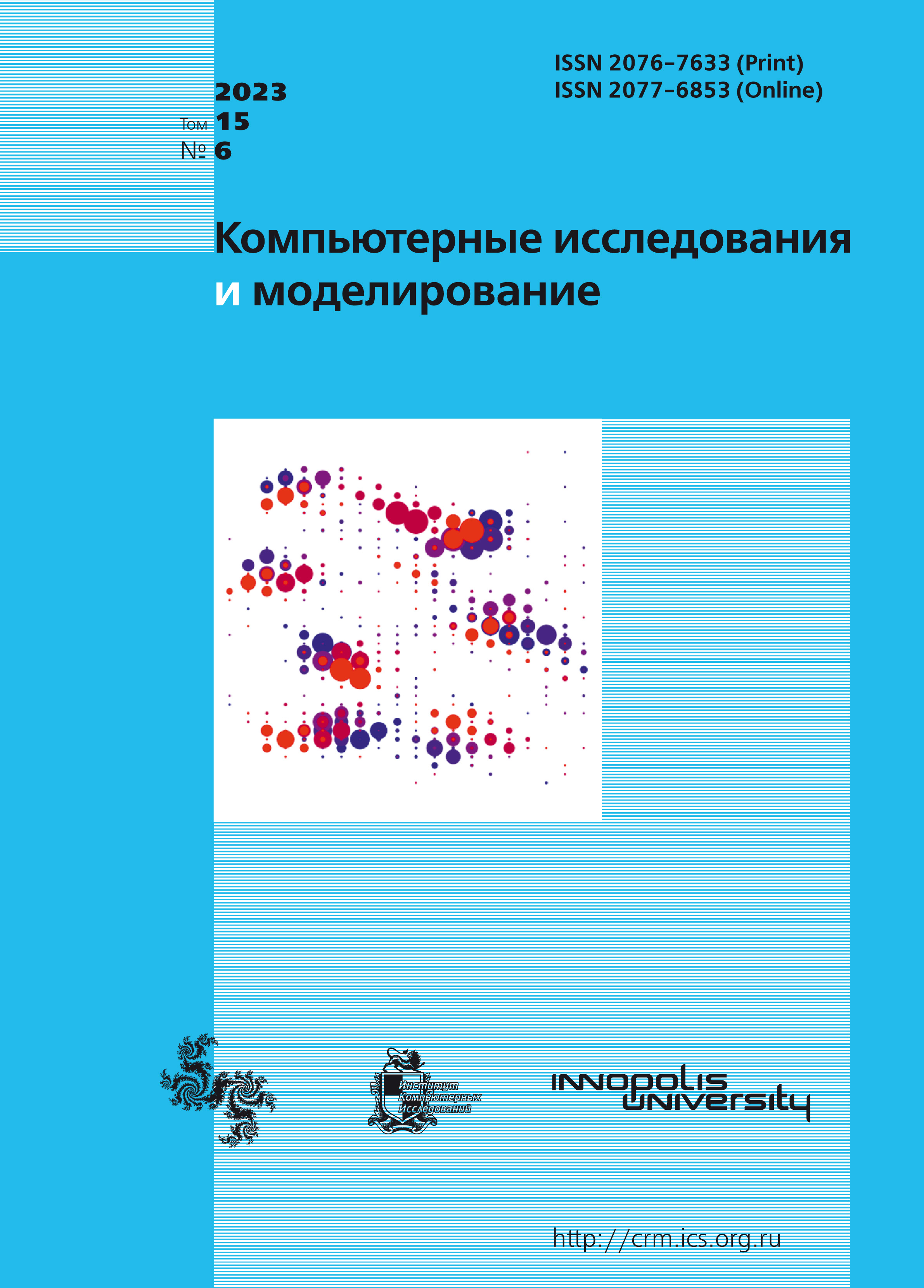All issues
- 2024 Vol. 16
- Issue 1 (special issue)
- 2023 Vol. 15
- 2022 Vol. 14
- 2021 Vol. 13
- 2020 Vol. 12
- 2019 Vol. 11
- 2018 Vol. 10
- 2017 Vol. 9
- 2016 Vol. 8
- 2015 Vol. 7
- 2014 Vol. 6
- 2013 Vol. 5
- 2012 Vol. 4
- 2011 Vol. 3
- 2010 Vol. 2
- 2009 Vol. 1
On the uniqueness of identification of reaction rate parameters in a combustion model
 pdf (194K)
pdf (194K)
A model of combustion of premixed mixture of gases with one global chemical reaction is considered, the model includes equations of the second order for temperature of mixture and concentrations of fuel and oxidizer, and the right-hand sides of these equations contain the reaction rate function. This function depends on five unknown parameters of the global reaction and serves as approximation to multistep reaction mechanism. The model is reduced, after replacement of variables, to one equation of the second order for temperature of mixture that transforms to a first-order equation for temperature derivative depending on temperature that contains a parameter of flame propagation velocity. Thus, for computing the parameter of burning velocity, one has to solve Dirichlet problem for first-order equation, and after that a model dependence of burning velocity on mixture equivalence ratio at specified reaction rate parameters will be obtained. Given the experimental data of dependence of burning velocity on mixture equivalence ratio, the problem of optimal selection of reaction rate parameters is stated, based on minimization of the mean square deviation of model values of burning velocity on experimental ones. The aim of our study is analysis of uniqueness of this problem solution. To this end, we apply computational experiment during which the problem of global search of optima is solved using multistart of gradient descent. The computational experiment clarifies that the inverse problem in this statement is underdetermined, and every time, when running gradient descent from a selected starting point, it converges to a new limit point. The structure of the set of limit points in the five-dimensional space is analyzed, and it is shown that this set can be described with three linear equations. Therefore, it might be incorrect to tabulate all five parameters of reaction rate based on just one match criterion between model and experimental data of flame propagation velocity. The conclusion of our study is that in order to tabulate reaction rate parameters correctly, it is necessary to specify the values of two of them, based on additional optimality criteria.
Indexed in Scopus
Full-text version of the journal is also available on the web site of the scientific electronic library eLIBRARY.RU
The journal is included in the Russian Science Citation Index
The journal is included in the RSCI
International Interdisciplinary Conference "Mathematics. Computing. Education"






